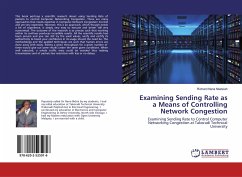The Address Resolution Protocol is a computer networking protocol for determining a network host's link layer or hardware address when only its Internet Layer or Network Layer address is known. This function is critical in local area networking as well as for routing internetworking traffic across gateways based on IP addresses when the next-hop router must be determined. ARP was defined by RFC 826 in 1982. It is Internet Standard STD 37.ARP has been implemented in many types of networks, such as Internet Protocol network, CHAOS, DECNET, Xerox PARC Universal Packet, Token Ring, FDDI, IEEE 802.11 and other LAN technologies, as well as the modern high capacity networks, such as Asynchronous Transfer Mode. Due to the overwhelming prevalence of IPv4 and Ethernet in general networking, ARP is most frequently used to translate IP addresses to Ethernet MAC addresses.In the next generation Internet Protocol, IPv6, ARP's functionality is provided by the Neighbor Discovery Protocol.
Bitte wählen Sie Ihr Anliegen aus.
Rechnungen
Retourenschein anfordern
Bestellstatus
Storno








